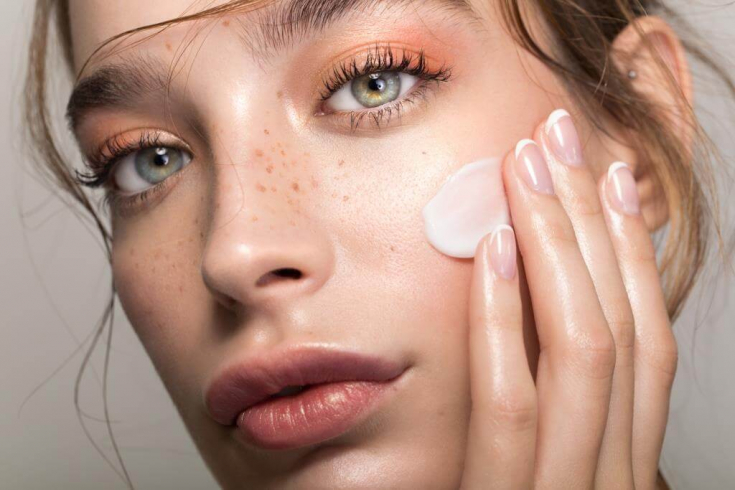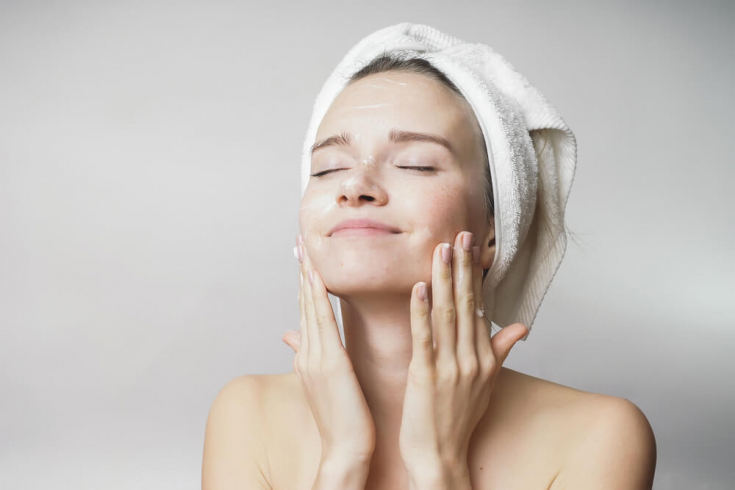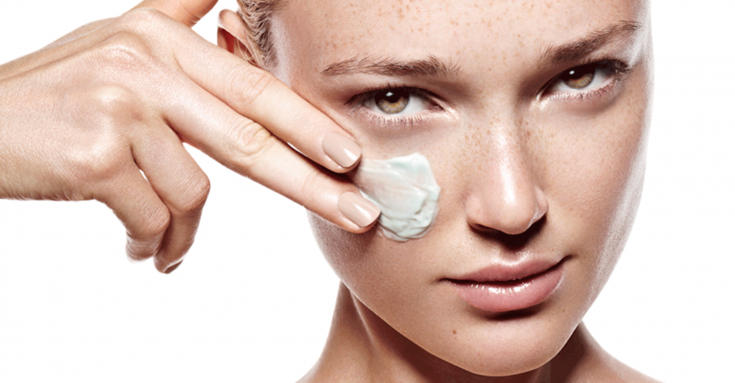Leather – it is a unique organ in the human body. It helps to remove all toxins, waste products of the body to the outside, reflects health from the inside. Naturally, this affects its appearance. Such skin is often called problematic, because it really is. In the absence of proper care breaking protective barrier and acid – alkaline balance. Rashes on the skin will not keep you waiting, leaving stagnant spots and scars as a gift. Let's figure out how to properly care for the skin without causing harm.
- Basic care for problem skin: steps
- Advice for those with problematic facial skin
- Relationship between nutrition and occurrence of skin rashes
Basic care for problem skin: stages
- Make-up removal.
A mandatory step that should not be skipped, even if there is only a cream on the surface of the skin.
Subscribe to our page on Instagram!
Absolutely any micellar lotion, whether it be hydrophilic oil or make-up remover milk, should be washed off. In its composition, the funds contain & nbsp; Surfactant – surfactants. They attract impurities, sebum, decorative cosmetics, while some of them are removed with a cotton pad, while the other – remains on the surface.
Read also: Problem facial skin: how to choose the right care
- Cleansing
This is the stage where you wash off the makeup remover residue, all the toxins and impurities, sebum that has been carefully produced throughout the day and night. The key to success in this case will be the regularity of – cleansing the skin in the morning and evening. The main thing is not to overdo it: the principle «to creaking» and does not come close to cleansing the skin. This will cause the protective barrier to break, causing breakouts or an increase in breakouts.

For cleansing of problematic facial skin, you should use special washing gels of the "Sebium" category. The products of this line gently cleanse excess sebum without destroying the hydrolipid mantle, and also regulate the production of sebium. Most often, gels for oily problematic skin contain fruit acids. They will help protect the skin from the growth of pathological microorganisms and dry out existing inflammation.
- Tone
While washing, our skin comes into contact with water, which has an alkaline pH. Accordingly, there is a shift acid – alkaline balance. It needs to be restored so that the skin is not overdried and tight.
That is why the main rule for choosing a tonic is the absence of alcohol in the composition.
Pay attention to the pH numbers on the packaging.
Subscribe to our page on Facebook!
After cleansing, the skin should not dry out: there should be a minimum amount of time between washing and applying the toner.
- Hydration
Very often, the cause of problematic facial skin is insufficient hydration, which triggers a number of consequences. In response to lack of moisture, the skin increases sebum production.

Finding basic moisturizing for problematic skin is not always easy. There are 2 types of skin moisturizing:
- Moisturizing – proper humidification
- Hydrating – hydration, filling with moisture
Moisture – creating a protective barrier to prevent moisture loss. These include products that create a protective film on our skin and prevent moisture from evaporating; agents penetrating the stratum corneum and smoothing skin structure.
Components of this type of cosmetics – comedogenic, so those with problematic skin should avoid them.
Hydration – this type of moisturizing is necessary for both oily and dry skin when dehydration is the cause of excess or lack of sebum. This includes products whose components bind and retain moisture.
Problem skin prone to breakouts for the final step of basic care, hydration is the right thing to do.
Advice for those with problematic facial skin
- Do not use soap to clean
Soap has an alkaline pH, destroys the protective mantle, dries and tightens the skin. All this will reduce the ability of the skin to fight external influences.
- Wash your hands before touching your face
With the help of hands, we touch everything: furniture, telephone, body parts, etc. All that dust, dirt, bacteria then we carry to the skin. Try not to touch your face during the day.
- Do not replace makeup removal with cleansing
Everything must be consistent. Each step is a must for problematic skin care.
Read also: Eternal competition: the fight against oily problem skin

- It is better to limit or completely eliminate scrubs
In the case of problematic skin and the presence of rashes, scrubs contribute to the spread of inflammation, increase in the number of rashes. The exfoliating effect will further cause increased keratinization and increase sebum production.
Relationship between diet and skin rashes
It has long been proven that we are what we eat! Our diet is directly related to the skin and may well be the cause of rashes. We can say with confidence that the owners of problem skin should reduce their consumption of sugar, and now we are talking not only about sweets. Read the ingredients carefully! Manufacturers are often silent about the amount of sugar, they use other names, such as fructose, sucrose, glucose, glucose syrup. You should also pay attention to foods with a high glycemic index. All of them play a role in the emergence of skin rashes and increased work of sebaceous glands.
Read also: Problem skin: seek advice from a gynecologist
Glucose, getting into the blood, stimulates the release of insulin and insulin-like factor-1. They, in turn, directly affect the functioning of the sebaceous glands and increase sebum production. In conditions of excessive amounts of sebium, Propionibacterium acnes bacteria is happy to join and multiply there, causing inflammation.
According to some studies, there is a link between the occurrence of skin rashes and the consumption of dairy products. The mechanism of their influence is the same: they stimulate the formation of insulin-like factor-1. At the same time, there is a group of people who do not have an enzyme that breaks down lactose – milk protein.

Recently, the fashion for gluten has spread among the masses. Gluten – It is a vegetable protein found in cereals. It is well tolerated by most. However, there is a certain group of people with intolerance. In them, gluten can cause autoimmune disease – celiac disease and gluten intolerance without celiac disease.
Both lactose intolerance and gluten intolerance, if not diagnosed early, can contribute to skin rashes. In this case, a diet is necessary.
Proper nutrition and adherence to basic care rules for problem skin will help you protect it from external influences and maintain a beautiful appearance. After all, the best makeup – it is healthy clear skin.
More stuff on our YouTube channel:






Add a comment